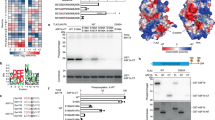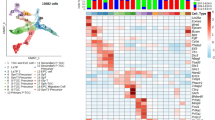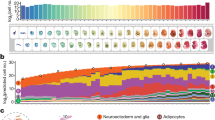Abstract
The regulation of chromatin structure is critical for a wide range of essential cellular processes. The Tousled-like kinases, TLK1 and TLK2, regulate ASF1, a histone H3/H4 chaperone, and likely other substrates, and their activity has been implicated in transcription, DNA replication, DNA repair, RNA interference, cell cycle progression, viral latency, chromosome segregation and mitosis. However, little is known about the functions of TLK activity in vivo or the relative functions of the highly similar TLK1 and TLK2 in any cell type. To begin to address this, we have generated Tlk1- and Tlk2-deficient mice. We found that while TLK1 was dispensable for murine viability, TLK2 loss led to late embryonic lethality because of placental failure. TLK2 was required for normal trophoblast differentiation and the phosphorylation of ASF1 was reduced in placentas lacking TLK2. Conditional bypass of the placental phenotype allowed the generation of apparently healthy Tlk2-deficient mice, while only the depletion of both TLK1 and TLK2 led to extensive genomic instability, indicating that both activities contribute to genome maintenance. Our data identifies a specific role for TLK2 in placental function during mammalian development and suggests that TLK1 and TLK2 have largely redundant roles in genome maintenance.
Similar content being viewed by others
Log in or create a free account to read this content
Gain free access to this article, as well as selected content from this journal and more on nature.com
or
References
Roe JL, Rivin CJ, Sessions RA, Feldmann KA, Zambryski PC . The Tousled gene in A. thaliana encodes a protein kinase homolog that is required for leaf and flower development. Cell 1993; 75: 939–950.
Sillje HH, Takahashi K, Tanaka K, Van Houwe G, Nigg EA . Mammalian homologues of the plant Tousled gene code for cell-cycle-regulated kinases with maximal activities linked to ongoing DNA replication. EMBO J 1999; 18: 5691–5702.
Sillje HH, Nigg EA . Identification of human Asf1 chromatin assembly factors as substrates of Tousled-like kinases. Curr Biol 2001; 11: 1068–1073.
Li Y, DeFatta R, Anthony C, Sunavala G, De Benedetti A . A translationally regulated Tousled kinase phosphorylates histone H3 and confers radioresistance when overexpressed. Oncogene 2001; 20: 726–738.
Delacroix S, Wagner JM, Kobayashi M, Yamamoto K, Karnitz LM . The Rad9-Hus1-Rad1 (9-1-1) clamp activates checkpoint signaling via TopBP1. Genes Dev 2007; 21: 1472–1477.
Shalom S, Don J . Tlk, a novel evolutionarily conserved murine serine threonine kinase, encodes multiple testis transcripts. Mol Reprod Dev 1999; 52: 392–405.
Han Z, Riefler GM, Saam JR, Mango SE, Schumacher JM . The C. elegans Tousled-like kinase contributes to chromosome segregation as a substrate and regulator of the Aurora B kinase. Curr Biol 2005; 15: 894–904.
Han Z, Saam JR, Adams HP, Mango SE, Schumacher JM . The C. elegans Tousled-like kinase (TLK-1) has an essential role in transcription. Curr Biol 2003; 13: 1921–1929.
Dillon PJ, Gregory SM, Tamburro K, Sanders MK, Johnson GL, Raab-Traub N et al. Tousled-like kinases modulate reactivation of gammaherpesviruses from latency. Cell Host Microbe 2013; 13: 204–214.
Carrera P, Moshkin YM, Gronke S, Sillje HH, Nigg EA, Jackle H et al. Tousled-like kinase functions with the chromatin assembly pathway regulating nuclear divisions. Genes Dev 2003; 17: 2578–2590.
Klimovskaia IM, Young C, Stromme CB, Menard P, Jasencakova Z, Mejlvang J et al. Tousled-like kinases phosphorylate Asf1 to promote histone supply during DNA replication. Nat Commun 2014; 5: 3394.
Pilyugin M, Demmers J, Verrijzer CP, Karch F, Moshkin YM . Phosphorylation-mediated control of histone chaperone ASF1 levels by Tousled-like kinases. PLoS ONE 2009; 4: e8328.
Groth A, Lukas J, Nigg EA, Sillje HH, Wernstedt C, Bartek J et al. Human Tousled like kinases are targeted by an ATM- and Chk1-dependent DNA damage checkpoint. EMBO J 2003; 22: 1676–1687.
Krause DR, Jonnalagadda JC, Gatei MH, Sillje HH, Zhou BB, Nigg EA et al. Suppression of Tousled-like kinase activity after DNA damage or replication block requires ATM, NBS1 and Chk1. Oncogene 2003; 22: 5927–5937.
Kelly R, Davey SK . Tousled-like kinase-dependent phosphorylation of Rad9 plays a role in cell cycle progression and G2/M checkpoint exit. PLoS ONE 2013; 8: e85859.
Sunavala-Dossabhoy G, De Benedetti A . Tousled homolog, TLK1, binds and phosphorylates Rad9; TLK1 acts as a molecular chaperone in DNA repair. DNA Repair (Amst) 2009; 8: 87–102.
Abreu CM, Kumar R, Hamilton D, Dawdy AW, Creavin K, Eivers S et al. Site-specific phosphorylation of the DNA damage response mediator rad9 by cyclin-dependent kinases regulates activation of checkpoint kinase 1. PLoS Genet 2013; 9: e1003310.
Bruinsma W, van den Berg J, Aprelia M, Medema RH . Tousled-like kinase 2 regulates recovery from a DNA damage-induced G2 arrest. EMBO Rep 2016; 17: 659–670.
Kim JA, Tan Y, Wang X, Cao X, Veeraraghavan J, Liang Y et al. Comprehensive functional analysis of the tousled-like kinase 2 frequently amplified in aggressive luminal breast cancers. Nat Commun 2016; 7: 12991.
Kim JA, Anurag M, Veeraraghavan J, Schiff R, Li K, Wang X . Amplification of TLK2 induces genomic instability via impairing the G2/M checkpoint. Mol Cancer Res 2016; 14: 920–927.
Sunavala-Dossabhoy G, Balakrishnan SK, Sen S, Nuthalapaty S, De Benedetti A . The radioresistance kinase TLK1B protects the cells by promoting repair of double strand breaks. BMC. Mol Biol 2005; 6: 19.
Sen SP, De Benedetti A . TLK1B promotes repair of UV-damaged DNA through chromatin remodeling by Asf1. BMC. Mol Biol 2006; 7: 37.
Canfield C, Rains J, De Benedetti A . TLK1B promotes repair of DSBs via its interaction with Rad9 and Asf1. BMC. Mol Biol 2009; 10: 110.
Ronald S, Sunavala-Dossabhoy G, Adams L, Williams B, De Benedetti A . The expression of Tousled kinases in CaP cell lines and its relation to radiation response and DSB repair. Prostate 2011; 71: 1367–1373.
Cross JC . Genetic insights into trophoblast differentiation and placental morphogenesis. Semin Cell Dev Biol 2000; 11: 105–113.
Simmons DG, Cross JC . Determinants of trophoblast lineage and cell subtype specification in the mouse placenta. Dev Biol 2005; 284: 12–24.
Abascal F, Corpet A, Gurard-Levin ZA, Juan D, Ochsenbein F, Rico D et al. Subfunctionalization via adaptive evolution influenced by genomic context: the case of histone chaperones ASF1a and ASF1b. Mol Biol Evol 2013; 30: 1853–1866.
Simmons DG, Fortier AL, Cross JC . Diverse subtypes and developmental origins of trophoblast giant cells in the mouse placenta. Dev Biol 2007; 304: 567–578.
Cleaton MA, Edwards CA, Ferguson-Smith AC . Phenotypic outcomes of imprinted gene models in mice: elucidation of pre- and postnatal functions of imprinted genes. Annu Rev Genomics Hum Genet 2014; 15: 93–126.
Singh V, Connelly ZM, Shen X, De Benedetti A . Identification of the proteome complement of human TLK1 reveals it binds and phosphorylates NEK1 regulating its activity. Cell Cycle 2017; 16: 915–926.
Hayashi S, Lewis P, Pevny L, McMahon AP . Efficient gene modulation in mouse epiblast using a Sox2Cre transgenic mouse strain. Mech Dev 2002; 119 (Suppl 1): S97–S101.
Kodym R, Mayerhofer T, Ortmann E . Purification and identification of a protein kinase activity modulated by ionizing radiation. Biochem Biophys Res Commun 2004; 313: 97–103.
Sunavala-Dossabhoy G, Li Y, Williams B, De Benedetti A . A dominant negative mutant of TLK1 causes chromosome missegregation and aneuploidy in normal breast epithelial cells. BMC Cell Biol 2003; 4: 16.
Sunavala-Dossabhoy G, Fowler M, De Benedetti A . Translation of the radioresistance kinase TLK1B is induced by gamma-irradiation through activation of mTOR and phosphorylation of 4E-BP1. BMC. Mol Biol 2004; 5: 1.
De Benedetti A . Tousled kinase TLK1B mediates chromatin assembly in conjunction with Asf1 regardless of its kinase activity. BMC Res Notes 2010; 3: 68.
Li Z, Gourguechon S, Wang CC . Tousled-like kinase in a microbial eukaryote regulates spindle assembly and S-phase progression by interacting with Aurora kinase and chromatin assembly factors. J Cell Sci 2007; 120 (Part 21): 3883–3894.
Petryszak R, Keays M, Tang YA, Fonseca NA, Barrera E, Burdett T et al. Expression Atlas update – an integrated database of gene and protein expression in humans, animals and plants. Nucleic Acids Res 2016; 44: D746–D752.
Hartford SA, Luo Y, Southard TL, Min IM, Lis JT, Schimenti JC . Minichromosome maintenance helicase paralog MCM9 is dispensible for DNA replication but functions in germ-line stem cells and tumor suppression. Proc Natl Acad Sci USA 2011; 108: 17702–17707.
Messiaen S, Guiard J, Aigueperse C, Fliniaux I, Tourpin S, Barroca V et al. Loss of the histone chaperone ASF1B reduces female reproductive capacity in mice. Reproduction 2016; 151: 477–489.
Lelieveld SH, Reijnders MR, Pfundt R, Yntema HG, Kamsteeg EJ, de Vries P et al. Meta-analysis of 2,104 trios provides support for 10 new genes for intellectual disability. Nat Neurosci 2016; 19: 1194–1196.
McKnight NC, Jefferies HB, Alemu EA, Saunders RE, Howell M, Johansen T et al. Genome-wide siRNA screen reveals amino acid starvation-induced autophagy requires SCOC and WAC. EMBO J 2012; 31: 1931–1946.
Mertins P, Mani DR, Ruggles KV, Gillette MA, Clauser KR, Wang P et al. Proteogenomics connects somatic mutations to signalling in breast cancer. Nature 2016; 534: 55–62.
Srihari S, Singla J, Wong L, Ragan MA . Inferring synthetic lethal interactions from mutual exclusivity of genetic events in cancer. Biol Direct 2015; 10: 57.
Copeland NG, Jenkins NA, Court DL . Recombineering: a powerful new tool for mouse functional genomics. Nat Rev Genet 2001; 2: 769–779.
Wu Y, Wang C, Sun H, LeRoith D, Yakar S . High-efficient FLPo deleter mice in C57BL/6J background. PLoS ONE 2009; 4: e8054.
Ruzankina Y, Pinzon-Guzman C, Asare A, Ong T, Pontano L, Cotsarelis G et al. Deletion of the developmentally essential gene ATR in adult mice leads to age-related phenotypes and stem cell loss. Cell Stem Cell 2017; 1: 113–126..
Knobel PA, Belotserkovskaya R, Galanty Y, Schmidt CK, Jackson SP, Stracker TH . USP28 is recruited to sites of DNA damage by the tandem BRCT domains of 53BP1 but plays a minor role in double-strand break metabolism. Mol Cell Biol 2014; 34: 2062–2074.
Gibson-Corley KN, Olivier AK, Meyerholz DK . Principles for valid histopathologic scoring in research. Vet Pathol 2013; 50: 1007–1015.
Gloeckner CJ, Boldt K, Schumacher A, Roepman R, Ueffing M . A novel tandem affinity purification strategy for the efficient isolation and characterisation of native protein complexes. Proteomics 2007; 7: 4228–4234.
Rappsilber J, Mann M, Ishihama Y . Protocol for micro-purification, enrichment, pre-fractionation and storage of peptides for proteomics using StageTips. Nat Protoc 2007; 2: 1896–1906.
Bunkenborg J, Garcia GE, Paz MI, Andersen JS, Molina H . The minotaur proteome: avoiding cross-species identifications deriving from bovine serum in cell culture models. Proteomics 2010; 10: 3040–3044.
Silva JC, Gorenstein MV, Li GZ, Vissers JP, Geromanos SJ . Absolute quantification of proteins by LCMSE: a virtue of parallel MS acquisition. Mol Cell Proteomics 2006; 5: 144–156.
Coyaud E, Mis M, Laurent EM, Dunham WH, Couzens AL, Robitaille M et al. BioID-based identification of Skp Cullin F-box (SCF)beta-TrCP1/2 E3 ligase substrates. Mol Cell Proteomics 2015; 14: 1781–1795.
Acknowledgements
We are grateful to the Stracker lab, I del Barco, A Igea, J Roig and C Gekas for helpful input; A Nebreda for critical reading of the manuscript; R Medema for sharing unpublished results; S Aivio for animal maintenance; D Reverter and P Gallego Alonso for purified LC8 protein; J Gloeckner for SF-TAP vectors; the IRB Histopathology facility and N Prats, M Aguilera, B Domínguez, E Llonch and N Vasconcelos for assistance; the IRB Advanced Digital Microscopy Core Facility for use of the Lightsheet Macroscope; L Bardia, M Marsal and S Tosi for sample preparation and image analysis; and E Sabido for technical advice and mass spectrometry measurements. Analysis was performed in the CRG/UPF Proteomics Unit, part of the 'Plataforma de Recursos Biomoleculares y Bioinformàticos' (ProteoRed-Instituto de Salud Carlos III, PT13/0001). THS was a Ramon y Cajal scholar and supported by the Ministerio de Economía y Competitividad (MINECO) (BFU2012-39521, BFU2015-68354, Ayudas para incentivar la incorporación estable de doctores (IED) 2015) and institutional funding from MINECO through the Centres of Excellence Severo Ochoa award and from the CERCA Programme of the Catalan Government. AG is an EMBO Young Investigator, and supported by the Danish National Research Foundation to the Center for Epigenetics (DNRF82), the European Commission ITN FP7 'aDDRess', a European Research Council Starting Grant (ERC2011StG, no. 281 765), the Danish Cancer Society, the Danish Medical Research Council, the Novo Nordisk Foundation and the Lundbeck Foundation. SSB and HG were supported by PhD fellowships from Fundacio La Caixa, PAK was supported by an Advanced Postdoc Mobility fellowship from the Swiss National Science Foundation and the Kurt und Senta Herrmann Stiftung and KR was supported by an FPI fellowship (MINECO).
Author contributions
SSB, PAK and HG designed, performed and analyzed most of the experiments; HG and AP carried out IP-MS experiments; PAK, EC and BR carried out BioID experiments; SAY and AdB assessed placental pathology; KR performed experiments; LP and PAK maintained mouse cohorts; JC performed lightsheet imaging; AG, TLR and SF generated and provided critical reagents and experimental advice; and THS designed and analyzed experiments and wrote the manuscript.
Author information
Authors and Affiliations
Corresponding author
Ethics declarations
Competing interests
The authors declare no conflict of interest.
Additional information
Edited by X Lu
Supplementary Information accompanies this paper on Cell Death and Differentiation website
Supplementary information
Rights and permissions
About this article
Cite this article
Segura-Bayona, S., Knobel, P., González-Burón, H. et al. Differential requirements for Tousled-like kinases 1 and 2 in mammalian development. Cell Death Differ 24, 1872–1885 (2017). https://doi.org/10.1038/cdd.2017.108
Received:
Revised:
Accepted:
Published:
Issue date:
DOI: https://doi.org/10.1038/cdd.2017.108
This article is cited by
-
Mechanistic insights into Circ-MBOAT2-mediated regulation of TLK1 through miR-664b-3p in non-small cell lung cancer
Hereditas (2025)
-
Tousled-like kinase loss confers PARP inhibitor resistance in BRCA1-mutated cancers by impeding non-homologous end joining repair
Molecular Medicine (2025)
-
Tousled-like kinase 2 targets ASF1 histone chaperones through client mimicry
Nature Communications (2022)
-
Changes in chromatin accessibility landscape and histone H3 core acetylation during valproic acid-induced differentiation of embryonic stem cells
Epigenetics & Chromatin (2021)
-
The Tousled-like kinases regulate genome and epigenome stability: implications in development and disease
Cellular and Molecular Life Sciences (2019)



